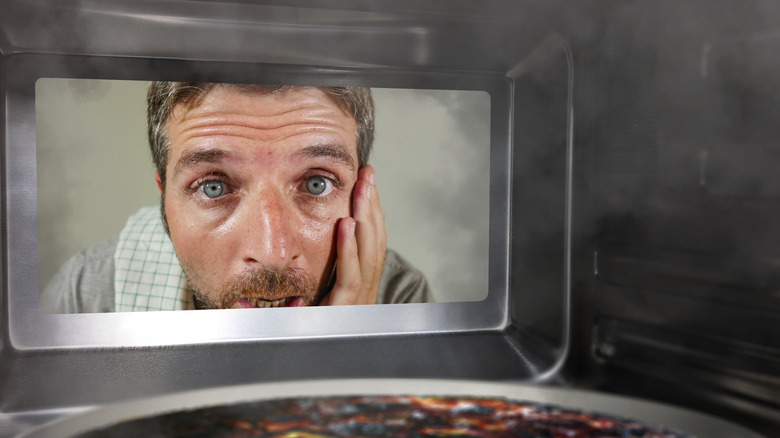Hey there fellow seafood lovers! Today I’m gonna share my tried-and-tested method for cooking frozen shrimp in the microwave. Trust me, it’s way easier than you might think and saves so much time compared to traditional cooking methods Let’s dive right in!
Why Choose Microwave Cooking for Frozen Shrimp?
Before we get to the nitty-gritty. here’s why microwaving frozen shrimp is actually pretty awesome
- Super Quick: Takes just 2-4 minutes depending on quantity
- Mega Convenient: No need to defrost first
- Energy Efficient: Uses less power than stovetop cooking
- Keeps Flavor Intact: Preserves the natural taste and texture
- Less Cleanup: Just one microwave-safe dish needed
Step-by-Step Guide to Microwaving Frozen Shrimp
What You’ll Need:
- Frozen shrimp (peeled and deveined)
- Microwave-safe dish
- Microwave-safe cover or plastic wrap
- Paper towels
- Your favorite seasonings
Basic Cooking Instructions:
-
Prep Your Shrimp
- Rinse frozen shrimp under cold water to remove ice crystals
- Pat dry with paper towels
- Arrange in a single layer in your microwave-safe dish
-
Season (Optional but Recommended)
- Add your fave seasonings (I love garlic, lemon, and a pinch of cajun!)
- Drizzle with a tiny bit of olive oil if desired
-
Cover & Cook
- Cover dish with lid or plastic wrap (leave a small vent)
- Microwave on medium-high using this timing guide:
- 8 oz (½ pound): 2-3 minutes
- 16 oz (1 pound): 3-4 minutes
- 24 oz (1.5 pounds): 4-5 minutes
-
Check & Rest
- Let stand for 1-2 minutes after cooking
- Shrimp should be pink and opaque when done
- If needed, add 30-second intervals until fully cooked
Pro Tips for Perfect Microwave Shrimp
Here’s what I’ve learned from my kitchen experiments:
- Don’t Overcrowd: Arrange shrimp in a single layer for even cooking
- Watch Carefully: Overcooking = rubber city! Better to undercook slightly and add time
- Size Matters: Larger shrimp need more time than smaller ones
- Steam is Your Friend: A little water (about 1 tablespoon) in the dish helps steam the shrimp
Yummy Ways to Serve Your Microwaved Shrimp
Once your shrimp are cooked, try these quick serving ideas:
-
Quick Shrimp Tacos
- Warm tortillas
- Add shrimp
- Top with slaw and avocado
-
Simple Shrimp Pasta
- Toss with warm pasta
- Add olive oil and garlic
- Sprinkle with parmesan
-
Protein-Packed Salad
- Mix with fresh greens
- Add cherry tomatoes
- Drizzle with dressing
Troubleshooting Common Issues
Sometimes things don’t go as planned. Here’s how to fix common problems:
- Rubbery Shrimp: You’ve overcooked them. Next time, reduce cooking time by 30 seconds
- Still Gray Inside: Need more cooking time. Add 30-second intervals
- Uneven Cooking: Spread them out more evenly next time
- Too Dry: Add a splash of water or lemon juice before cooking
Storage Tips
Got leftovers? Here’s what to do:
- Store in airtight container
- Keep in fridge up to 3 days
- Reheat in microwave for 30 seconds
- Add a splash of water when reheating
Happy cooking, friends!
Got questions about microwaving shrimp? Drop ’em in the comments below – I’d love to help!
FAQ
Q: Can I cook frozen shrimp without thawing?
A: Yep! That’s the beauty of this method.
Q: How do I know when they’re done?
A: They should be pink and opaque, not gray or translucent.
Q: Is it safe to microwave frozen shrimp?
A: Absolutely! Just make sure they reach 145°F internal temperature.
Q: Can I reuse the cooking liquid?
A: You betcha! It makes a tasty base for sauces or soups.

But why is the microwave a bad idea?

Simply put, microwaves cook completely differently than regular heat sources. Whereas the oven, stovetop, broiler, and grill all cook the outside of the food first — with the internal temperature rising last — microwaves do the exact opposite. They cook the inside first, with radiation instead of heat. If youve ever noticed that your reheated soup has a hot spot in the middle of the bowl or last nights porkchop came out sizzling in the center but only lukewarm along the edges after being zapped — this is why.
When it comes to something as delicate as shrimp, this manner of cooking will have disastrous results. Not only will the texture be completely ruined, but microwaving seafood can result in some really terrible smells. Just think of the co-worker who likes to microwave their leftover fish in the breakroom for an idea of how bad the outcome can be.
